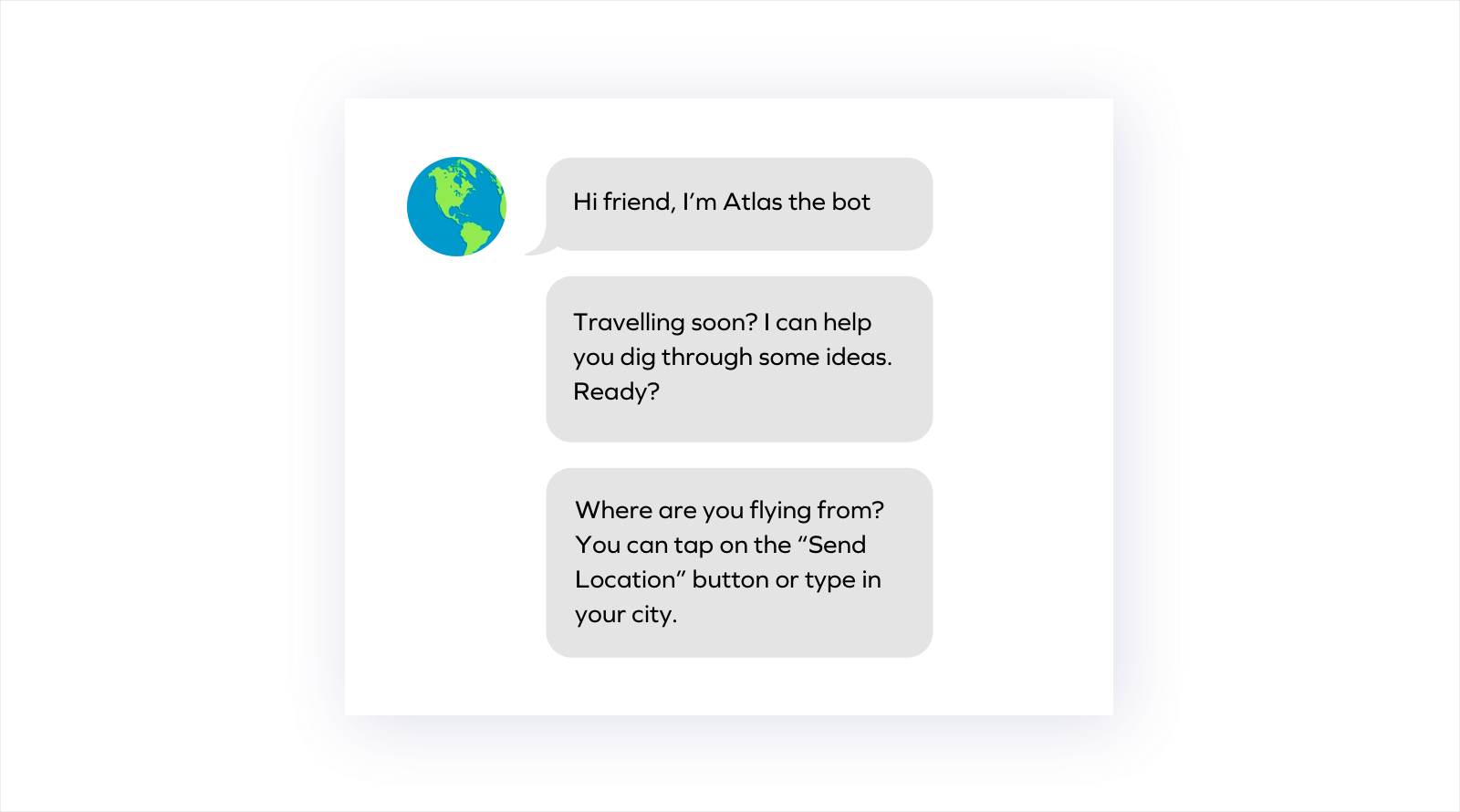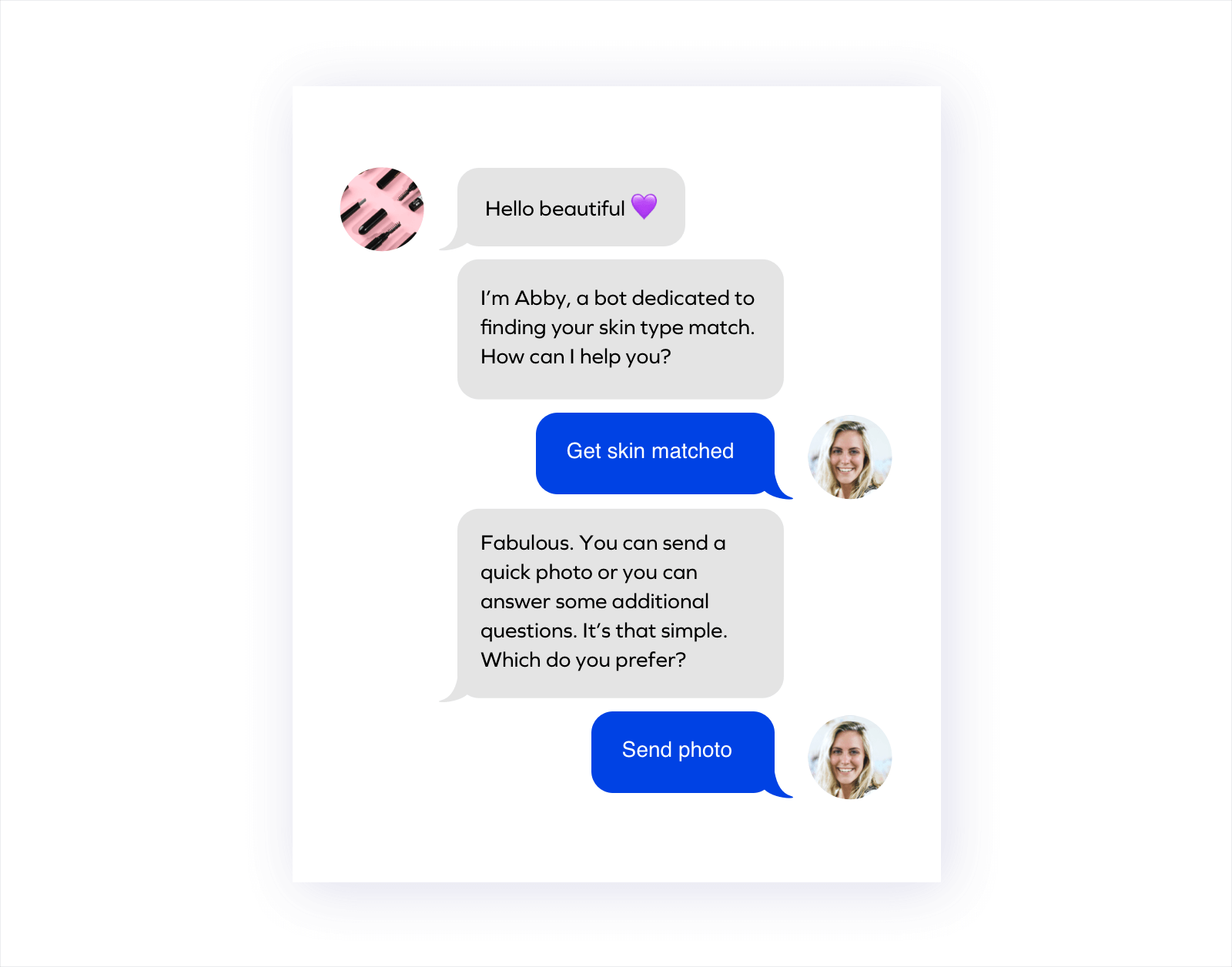Humanizing the Shopping Experience with Chatbots
It’s not about mimicking humans, but actually offering a human experience. Nailing your chatbot strategy will unlock an exceptional customer experience that exceeds customer expectations.
 Product Page Guide
Product Page Guide
It’s not about mimicking humans, but actually offering a human experience. Nailing your chatbot strategy will unlock an exceptional customer experience that exceeds customer expectations.
In our always-plugged-in world, consumers’ expectations of customer service continue to expand. Not only do they want 24/7 support, they want it on their platform of choice, whether it’s through social media, email, or chat.
In this chapter, we’ll dive into how bots can help you humanize eCommerce and increase conversions.
Chatbots have become the preferred front-line customer service solution, and with good reason. They’re always on, and they can be integrated with many different platforms. In fact, chatbots are estimated to save businesses up to $11 billion in support costs by 2025, according to Business Insider.
When businesses think about implementing chatbots, they should be setting out to do so to improve customer experiences for specific scenarios. There are several key assumptions business owners must make when deciding to implement chatbots:
When looking through these assumptions, it’s clear that it’s not the chatbot that’s humanizing the experience but the business owner.
Business owners must fundamentally believe chatbots can improve their customers’ experience under specific use cases, either due to a high confidence level in the accuracy of a chatbot’s responses or due to the speed of service when delivering a simple answer.
A mistake that many brands make is wanting their chatbot to appear like an actual human. The idea isn’t to trick your customers into thinking they’re interacting with a real human though; it’s to provide them with a human experience.
Chatbots are not designed to mimic humans. In fact, any business that uses chatbots in this fashion is doing it wrong. The “humanizing” part about chatbots is the human-driven and human-derived intent.
If the key to making a chatbot seem human is to provide a good experience for your customer, then it’s important to consider how a bot will help you accomplish your goals. Here are a few scenarios for eCommerce brands where a chatbot is an excellent solution.
If you have a lot of FAQ articles that customers never read, you can program a chatbot to use this content. A chatbot that can learn from your FAQ content and then surface those answers to customers who ask relevant questions can help solve a problem instantly and help reduce overhead, saving time and resources.
A concierge-like bot can help customers find the right product through intelligent data, and it can pass things along to a human when its options are exhausted.

Many customer service teams field a lot of questions about order statuses, and this can divert time away from more valuable conversations that require a human to handle. A chatbot can easily detect a question such as “where’s my order” and immediately provide a friendly, yet timely, response. If the customer needs more info, then they can progress to a live agent if needed.
Even in situations where a customer needs a human to help out, a chatbot can still streamline the experience by collecting useful information that can improve the experience once an agent is available.
While it’s not advisable to try and program a chatbot that seems like an actual human, that doesn’t mean that it has to sound like an actual robot either.
There are a few ways that you can ensure that the language your chatbot uses conveys a friendly, approachable, and helpful tone as that first touchpoint with the customer. Here are some pointers:
Just like in life, it’s polite to start a conversation with a salutation. Even if customers initiate the conversation, your first response should begin with a friendly hello.

Even small touches of personality throughout a conversation can go a long way to making the chatbot experience more enjoyable for your customers — and this is much easier to do if you think about your chatbot as an actual person. It might seem silly at first, but creating a fleshed-out persona for your bot will make it easier to write exchanges that seem less cold.
It’s important for your chatbot to be cohesive with your overall brand voice, so the customer experience doesn’t feel disjointed. Think about how you communicate with customers across other channels and find ways to infuse your bot with some key references to this voice. This will make your bot an extension of your brand, rather than just an AI tool.

Giving your chatbot a name that aligns with its personality and your brand is an easy way to make it more relatable.
Typically customers will select predetermined options when interacting with a chatbot, and rather than making these basic “yes” and “no” phrases, consider opting for more conversational responses. This starts to create the sense of an actual conversation, and it makes it easier to craft copy for the bot that “responds” to these exchanges in more natural ways.
You might have strict rules about grammar and style across your site, but a chatbot can easily get weighed down by formality. Don’t let the rules prevent you from creating a relatable exchange with your customers.
With more people communicating via short messaging, emojis and gifs have become a common way to communicate in succinct ways. Not only does an emoji make the exchange more playful, it can also be a quick way to add personality without excessive characters.
In a recent survey conducted by Audience, MyClever, and Drift, thousands of customers were asked to evaluate their online experience with businesses and to detail their frustrations. These were their top answers:
What do all of those complaints have in common? They can result in a consumer leaving the site without making a purchase. Another thing they have in common is that a chatbot can alleviate them. By helping customers find what they’re looking for and answering their questions, those customers will have a better shopping experience, and they’ll be more likely to stick around and buy something.
Another way you can increase conversions is by using a chatbot for cart abandonment. Chatbots can remind customers before they leave the site that they have items in their cart, and ask them if they need help. You can also use chatbots to deliver upsells and information about promotions.

There are a multitude of ways that you can use chatbots to directly improve conversions, but there are some indirect ways they can benefit your business, too. Without having to invest time and money into the first level of customer service, you’ll be able to pour those resources into other new and innovative ways to grow your business.
Chatbots shouldn’t be thought of as “robots who talk to my customers.” The fact is, true artificial intelligence doesn’t exist yet. Most of the “bot” experience is driven by data. Therefore, merchants have control over a bot’s conversational patterns and have lots of opportunities to inject a humanizing experience that is simply augmented by automation technology.
Brands shouldn’t shy away from bots; instead, they need to embrace bots for their many benefits and use them to create experiences that work for their customers.
“Yotpo is a fundamental part of our recommended tech stack.”
 Laura Doonin, Commercial Director
Laura Doonin, Commercial Director








